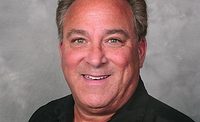
Installing radiant heat in an elephant barn requires unique solutions
-- hanging hydronic units in the air and placing pipe deeper than
normal. Photo: Paul A. Selvaggio
Menser Inc. is a family owned and operated plumbing and heating company turning 104 years old in 2009.Margaret F. Menseris the second generation working in the business, along with her childrenMarilyn M. LaugheryandTodd E. Menser.
The fourth generation is a working part of the team right now, and it was throughJennifer Bittinger(original ownerW.E. Menser’s great-granddaughter) thatPMfound out about a unique radiant and hydronic application for the Pittsburgh Zoo and PPG Aquarium.
This world-renowned zoo has had a long-standing commitment to the African elephant population, beginning with a 1994 acquisition of two bulls, according toDr. Barbara Baker, president and CEO of the Pittsburgh Zoo and PPG Aquarium.
Hoping to continue its successful African elephant breeding program, funds were secured in January 2006 to develop an International Conservation Center in Somerset County. The 724-acre center is a multifaceted elephant care and breeding facility, which houses up to 20 elephants, including five bulls of various ages.
The first facility designed sits on approximately 1 acre. This space consists of stalls for animal housing, a large indoor arena for exercise in winter months, as well as space for staff training and education programs.
And since there’s nothing like a warm environment to encourage some proper elephant “bonding,” Menser Inc. was called in to provide a radiantly heated bull pen and keeper area.
Jennifer’s husbandMatthew Bittingeralso works in Menser Inc. and was the technical mechanic for this project. The plumbing and heating teams began work in July 2008, starting with the installation of thousands of feet of 1/2-inch REHAU tubing in the stalls and zookeeper space.

Menser Inc. installed two “hot rocks”
in the elephant’s day room. These are 12' x 12' cement pads with
3/4" radiant tubing inside, placed in the middle of the room. Photo: Menser Inc.
But the project wasn’t your typical radiant install job, Matthew Bittinger said. “We had to be conscious of the manifold locations, pipe, thermostat locations and materials used; we needed to keep it safe for the elephants.”
For example, Menser installed remote sensors in the concrete. The company also hung and piped hydronic unit heaters about 20 feet in the air, out of the elephants’ reach.
“There were other differences with this project,” Bittinger said. “The elephants are very curious, and would try to dig up the system if they could, so we dug and placed the pipe deeper than normal. Also, we ran the heating tube through PVC pipe for added protection.”
High output hydronic baseboard was installed in the keeper area on the second floor, which houses a lunch break area and bathroom with a shower for workers to clean up after taking care of the animals. There is also a kitchen and prep area for the animals’ meals located in the basement.
All this heated space is powered by three Weil-McLain Ultra 310 boilers.
Besides heat, Menser also played a part in delivering water to the animals. “The zoo wanted to be as ‘green’ as possible, being a conservation center. They wanted to reclaim and filter water for reuse, which they’ll use to wash down the stalls.”
A water pump system for the domestic and greywater systems was installed. However, the well was not producing a high enough volume of water to handle the projected usage. Installation of pipe around the building to catch rainwater from the downspouts and the drains in the stalls will go into the greywater system to be filtered and reused for wash down.
“We ran this pipe about 600 feet to the filtration system. After being filtered, we have a pump to get the water back up to the building.”
Todd E. Menser also designed and installed drinking stations for the elephants to mix the water. “Elephants drink warm water,” Jennifer informed us. Pumps automatically fill the drinking station through a timer.
Since completion in December 2008, Jackson, one of only three breeding African bulls in the country, has moved in to his new home and is adjusting well to his new surroundings.
“We really enjoyed the challenge of this project,” says Todd Menser. “I have to wonder what my father and grandfather would think about a job like this one. When W.E. started out, indoor plumbing and heating were new concepts.”
The company has signed on to provide plumbing to the next phase of the ICC - four bunk houses, a bath house and a multipurpose room for a kids camp the zoo will offer to help educate children.
Besides this next project, Menser is also the service and maintenance company for the zoo, which Bittinger is excited about, since the team will be able to follow Jackson’s progress and watch just how much he and his fellow elephants enjoy the space the heating team created for them.




